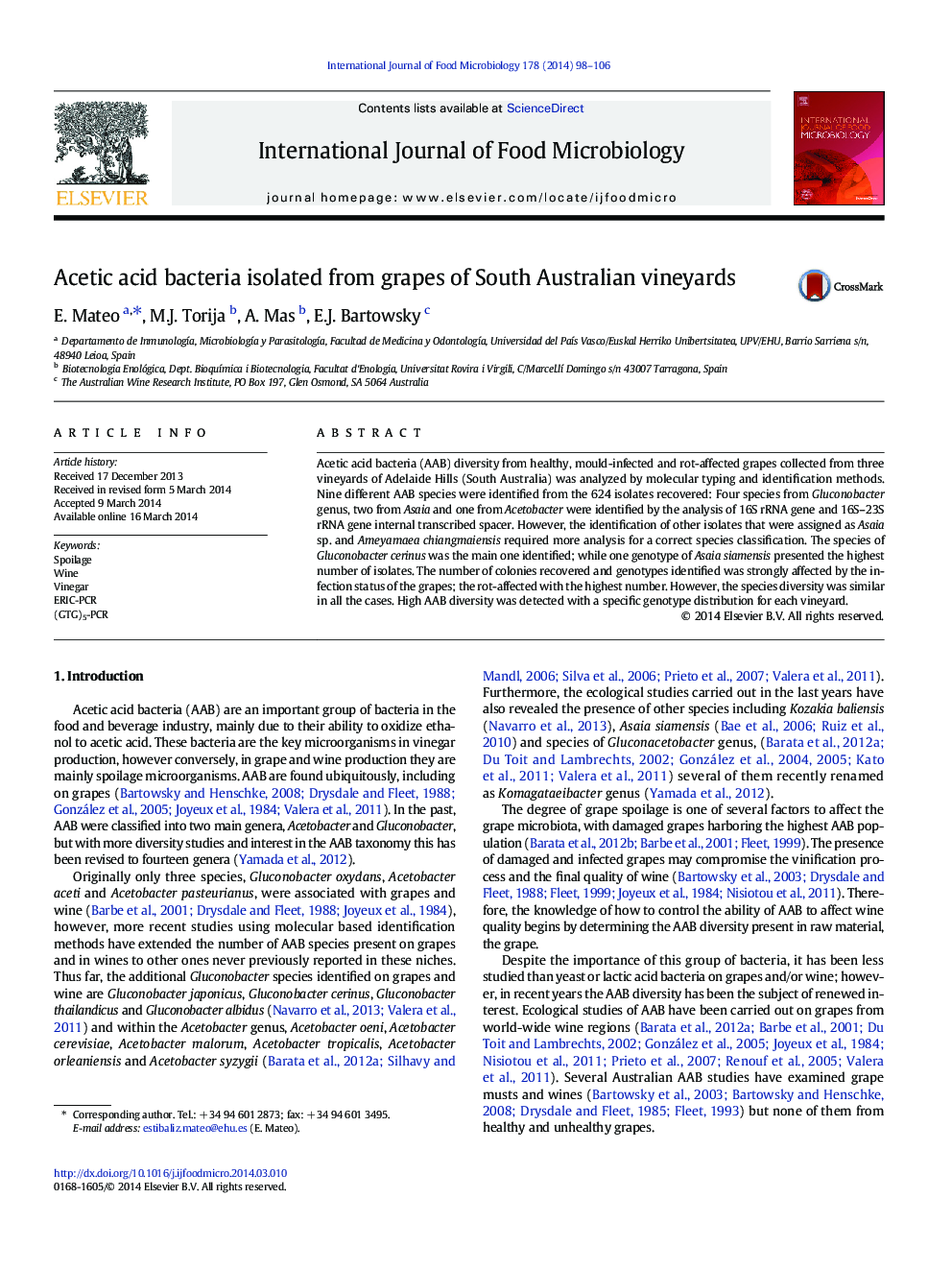| Article ID | Journal | Published Year | Pages | File Type |
|---|---|---|---|---|
| 4366994 | International Journal of Food Microbiology | 2014 | 9 Pages |
•First study of AAB from grapes of three Adelaide Hills vineyards, South Australia•Analysis of 12 grape varieties from healthy, mould-infected and rot-affected•High AAB diversity with a specific genotype distribution for each vineyard•Gluconobacter frateurii and Asaia lannaensis were detected on grapes for the first time.•Asaia sp. and Ameyamaea chiangmaiensis isolates need additional identification.
Acetic acid bacteria (AAB) diversity from healthy, mould-infected and rot-affected grapes collected from three vineyards of Adelaide Hills (South Australia) was analyzed by molecular typing and identification methods. Nine different AAB species were identified from the 624 isolates recovered: Four species from Gluconobacter genus, two from Asaia and one from Acetobacter were identified by the analysis of 16S rRNA gene and 16S–23S rRNA gene internal transcribed spacer. However, the identification of other isolates that were assigned as Asaia sp. and Ameyamaea chiangmaiensis required more analysis for a correct species classification. The species of Gluconobacter cerinus was the main one identified; while one genotype of Asaia siamensis presented the highest number of isolates. The number of colonies recovered and genotypes identified was strongly affected by the infection status of the grapes; the rot-affected with the highest number. However, the species diversity was similar in all the cases. High AAB diversity was detected with a specific genotype distribution for each vineyard.
